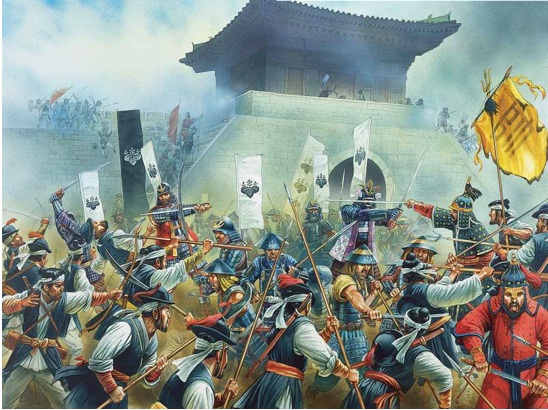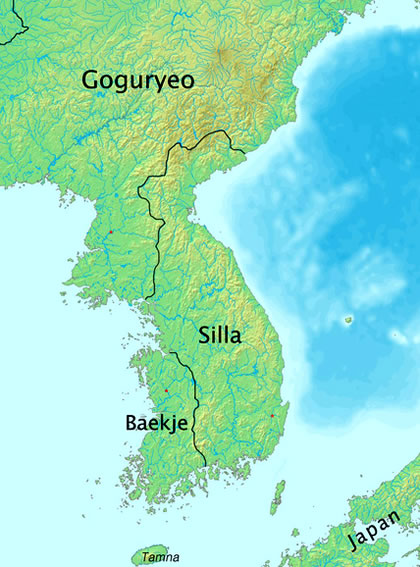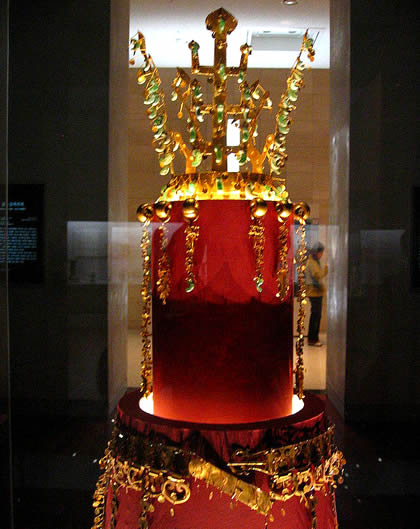With an area of 98,480 square kilometers, the Republic of Korea (ROK), or South Korea, occupies slightly less than half of the Korean Peninsula. It is bordered to the north by the Democratic People’s Republic of Korea (DPRK, or North Korea), to the south by the East China Sea, to the east by the Sea of Japan, and to the west by the Yellow Sea.
 |
| Republic of Korea Map |
A four-kilometer-wide demilitarized zone, which runs 238 kilometers across land and another three kilometers over the sea, marks the boundary between the two Koreas. The estimated population of ROK in 2005 was 48,422,644. Seoul, located near the border with North Korea, is the capital city.
South Korea has a republican government based on a presidential model. A popularly elected president, who is the head of state, appoints a prime minister as well as other members of the cabinet. A unicameral National Assembly functions as the legislative branch, and the Supreme Court and Constitutional Court make up the judicial branch.
In August 1945 Allied forces led by the United States landed on the Korean Peninsula in the south while Soviet forces moved down from the north, eventually liberating Korea from Japanese colonial rule. The 38th parallel became the boundary dividing the occupation forces from 1945 to 1948.
What began as the separation of two administrative units dictated by the Yalta agreement between the U.S. and the
Soviet Union in 1945 eventually led to the creation of two separate states dictated by the political and ideological divisions of the cold war.
Domestic developments further complicated the matter. Throughout the war years, various Korean nationalist factions operating at home and in exile jostled to position themselves as the representatives of an independent Korea. In the immediate postwar era, the United States eventually turned to Syngman Rhee, an exiled popular anticommunist nationalist to provide leadership in the south.
In 1947 the newly formed
United Nations (UN) created a commission to oversee national elections in Korea. Barred from access to the Soviet occupation zone, the commission oversaw the election of the National Assembly in the south in 1948. This body then elected Rhee as the first president. The Republic of Korea was formally established in May 1948.
War once again broke out on the Korean Peninsula when North Korean troops crossed the 38th parallel in a failed attempt to reunify the nation under communist rule. The United States promptly intervened in the conflict as part of a UN police action.
The Korean War cemented the patron-client relationship between the United States and South Korea. In 1954 the two countries signed a mutual defense treaty that formalized their bilateral security arrangements.
Although their numbers were reduced after the 1970s, U.S. troops were stationed in South Korea from then on. Additionally, the United States continued to supply generous military aid to build up South Korea’s defense capabilities. South Korea contributed forces to help the United States in
Vietnam from 1965 to 1973.
Authoritarian rule characterized the government of South Korea. Rhee combined bellicose rhetoric against the north with repressive tactics at home to silence political opposition. In 1952 he pushed for a change to the popularly elected presidency. Four years later he pushed through a questionable constitutional amendment that permitted a lifelong presidency.
 |
| Seoul |
This allowed him to run for president again in 1956 and 1960. Meanwhile, domestic, social, and economic problems generated widespread student protests. Rhee resigned and fled to Hawaii, where he lived in exile until his death in 1965.
After a short interregnum during which the country turned to a new constitution that established parliamentary democracy, three military men followed as presidents in South Korea. The first, General Park Chung Hee, launched a coup in May 1961 to overthrow the nine-month-old parliamentary government and placed the Republic of Korea under military rule for two years.
At the end of 1963 the country adopted a new constitution that permitted presidents to serve two four-year terms, and Park was duly elected to the office. But he would continue to manipulate constitutional processes, or, in some cases, suspend them altogether, in order to remain in power.
In 1971 he declared a state of emergency, suspended the constitution, dissolved the National Assembly, and then promulgated a new Yushin (revitalization) constitution. The Korean Central Intelligence Agency (KCIA), which he established, was used to intimidate South Korean dissenters.
Park relied on emergency decrees to repress this opposition to his regime; protesters were given long jail terms, a number of students were executed, and the press faced increasingly harsh censorship. Park’s regime finally came to an end when the director of the KCIA assassinated him in October 1979.
During the Park Chung Hee era, South Korea made its transition to a modern economy. Inspired by the Japanese economic miracle, the government adopted a series of five-year development plans aimed at transforming an agrarian nation to an industrial power.
Comparatively low labor costs allowed South Korea to compete effectively in such labor-intensive industries as textiles. In the 1970s the country shifted its focus away from labor-intensive light industries to heavy industries. This government-controlled economic development effort bore fruit as economic growth rates increased.
In December 1979 General Chun Doo Hwan, a veteran of the Vietnam War, came to power in a coup. Within months he declared martial law. Charging that pro-democracy student demonstrations in Kwangju Province had been instigated by North Korean infiltrators, he acquired emergency powers that would allow him to disregard any constitutionally recognized rights of the people.
He also embarked on a campaign to root out those who criticized his regime. Among those he arrested were three longtime civilian critics of authoritarian rule: Kim Young Sam, Kim Dae Jung, and Kim Jong Pil. But protests persisted, and in 1987 Chun stepped aside in favor of his handpicked successor, Roh Tae Woo, who won a presidential election with only 36 percent of the vote.
Under Roh, South Korea began to pursue new directions in foreign policy in keeping with the geopolitical ekspresi dominan that hearkened the end of antagonistic camps in the cold war. Roh followed up on an earlier usulan to exchange visits between North and South Korea. Following sports and cultural exchanges, the two countries signed the 1991 Basic Agreement on Reconciliation, Non-Aggression, and Cooperation of Exchanges.
Politics in South Korea followed a pattern of democraticization from the late 1980s onward. Kim Young Sam, a longtime critic of Park Chung Hee’s authoritarian rule, emerged victorious in the 1992 presidential elections, becoming the first civilian president in more than three decades.
Kim initiated a campaign to root out longtime corruption in government. Both the former presidents Chun and Roh were indicted for corruption and their roles in the 1979 military coup.
Kim Young Sam also faced pressure to liberalize the South Korean economy. Widely recognized as one of the economic miracles in Asia, South Korea had an average per capita income of $10,600.
By 1997 economic growth in South Korea showed signs of abatement due to the effects of the Asian financial crisis. The resulting labor and student protests eventually led to the victory of a longtime opposition leader, Kim Dae Jung, in the presidential elections.
 |
| One night in Seoul |
Kim Dae Jung presided over a country in the throes of an economic downturn. He pushed for bold reforms to ameliorate the situation. The South Korean leadership worked with the International Monetary Fund in its rescue effort. By 1999 the economy was well on its way to recovery.
It was in foreign relations that President Kim Dae Jung would leave his mark. He pursued efforts to build a more cordial relationship with his northern neighbor by providing economic assistance to the beleaguered north. Such efforts, Kim hoped, would end North Korean isolation and eventually change its governmental system.
Although Kim’s policy did not yield concrete results, his summit meeting with North Korean leader
Kim Jong Il in 2000 raised hopes about eventual reconciliation between the two Koreas. For his efforts, President Kim won the Nobel Peace Prize in 2000.
Roh Moo-hyun of the Millennium Democratic Party (MDP) became president after the 2002 elections.




























